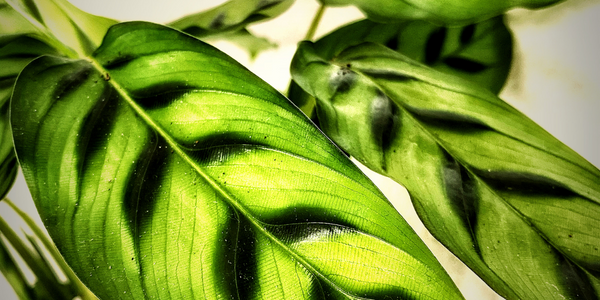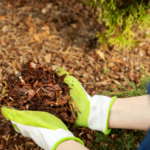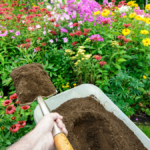Are you noticing yellow leaves on your Calathea plant? Don’t worry, this is a common issue for Calathea owners. In this article, we’ll discuss why Calathea leaves turn yellow and how to fix yellow leaves on calathea plants.
The most common reason for Calathea leaves turning yellow is too much direct sunlight. Calathea plants need indirect light to thrive, so if your plant is in direct sunlight, the leaves may start to yellow. Overwatering can also cause yellowing leaves. Calathea plants need moist soil, but they don’t like to be soggy. Make sure you’re not over-watering your plant, as this can cause root rot, which can lead to yellow leaves.
Incorrect soil pH is another potential cause of yellow leaves on Calathea plants. The ideal soil pH for Calathea is between 5.5 and 6.5, so make sure your soil is within this range. If it’s too high or too low, the leaves may start to yellow.
Finally, nutrient deficiency can cause Calathea leaves to yellow. Make sure you’re fertilizing your plant regularly with a balanced fertilizer.
By following these tips, you can ensure your Calathea plant stays healthy and the leaves don’t turn yellow. If you’re still having issues, it may be best to consult a professional to get an expert opinion on the health of your plant.
Main Causes For Calathea Plant Leaves Turning Yellow
Calathea plants are beautiful, low-maintenance houseplants that have striking colorful leaves. But when those leaves start turning yellow, it can be disheartening. Fortunately, there are some common causes for yellow leaves on calatheas and they can usually be corrected with a few simple changes.
The most common reason for calathea leaves turning yellow is due to too much direct sunlight. Calatheas need bright, indirect sunlight to thrive. If they are receiving direct sunlight, the leaves can yellow and even scorch. Try moving your calathea to a spot with indirect light and watch to see if the leaves start to recover.
Another reason for yellow leaves can be due to inadequate watering. Calatheas like to be kept consistently moist, but not soggy. The best way to water is to check the soil moisture at least once a week. If the top inch of soil feels dry, give it a good soak and discard any excess water from the saucer.
Finally, yellowing leaves can also be a symptom of underwatering or overwatering. If you are underwatering, the leaves may start to yellow and curl. This is due to the plant not having enough water to support its growth. On the other hand, if you are overwatering, your plant may suffer from root rot, which can also cause yellowing leaves.
In summary, the three main causes for calathea plant leaves turning yellow are too much direct sunlight, inadequate watering, and underwatering or overwatering. By addressing these issues and making the necessary adjustments, you can help your calathea thrive.
5 Steps to Fix Calathea Leaves Turning Yellow – How to Revive Your Calathea Plant!
- Check the Potting Soil: Calatheas need well-draining, nutrient-rich potting soil. If the soil is too compacted, it restricts the plant’s ability to take in moisture and nutrients. To fix this, gently loosen the top inch of soil and repot the Calathea into a new pot with fresh soil.
- Check the Water Quality: If you’re using tap water, the chlorine and fluoride levels may be too high for the Calathea to thrive. Using filtered or distilled water can help the plant absorb the moisture and nutrients it needs.
- Provide Adequate Light: Calatheas thrive in bright, indirect light. If the plant is in a spot that receives too much direct sunlight, the leaves may start to turn yellow.
- Increase Humidity Levels: Calatheas need high humidity levels in order to thrive. If the air is too dry, the leaves will start to turn yellow. To increase humidity levels, mist the leaves with a spray bottle and consider getting a humidifier.
- Monitor Fertilizer Usage: Too much fertilizer can cause the leaves to turn yellow. If you’re using fertilizer, make sure to follow the directions and use it sparingly.
By following these steps, you can help restore your Calathea’s healthy, vibrant leaves.



